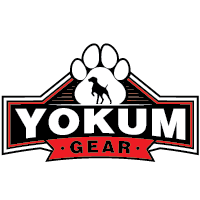Potty training is one of the most crucial aspects of dog ownership, ensuring a clean and harmonious living environment. While the process can be challenging, adopting the right strategies can make it smoother and more effective. This article outlines some final strategies that can lead to successful dog potty training, giving you and your furry friend the best chance at success.
1. Establish a Routine
Dogs thrive on routine. Setting a consistent schedule for meals, potty breaks, and playtime helps your dog understand expectations. Take your dog out for bathroom breaks at the same times each day, such as first thing in the morning, after meals, and before bedtime. Over time, your dog will start to anticipate these breaks and adjust their behavior accordingly.
2. Designate a Potty Spot
Choosing a specific spot for bathroom breaks can help reinforce the idea of where it’s appropriate to go. Whether it’s a particular area of your yard or a nearby park, consistently taking your dog to the same spot can create a clear association. The familiar location will also carry scents that signal to your dog that it’s an appropriate place to relieve themselves.
3. Use Positive Reinforcement
Positive reinforcement is one of the most effective methods for training any dog. When your dog successfully goes potty in the designated area, immediately reward them with praise, affection, or a treat. Consistent positive reinforcement will build a strong connection between the behavior and the reward, encouraging your dog to repeat the desired action.
4. Monitor Food and Water Intake
Keeping a close eye on your dog’s food and water intake can help you predict when they’ll need to go outside. Try to feed them at the same times each day and take them out soon after eating or drinking. Additionally, be mindful of the amount of water your dog consumes, especially in the evening, to prevent nighttime accidents.
5. Watch for Signs
Dogs often exhibit specific behaviors when they need to go potty, such as sniffing the ground, pacing, or circling. Observing and recognizing these signs can help you act quickly and take your dog outside before an accident occurs. Over time, you’ll become more attuned to your dog’s signals, making the process even more efficient.
6. Crate Training
Crate training can be an invaluable tool in potty training. Dogs generally avoid soiling their sleeping areas, so using a crate can help manage their bathroom habits. Ensure that the crate is appropriately sized—large enough for your dog to stand and turn around, but not so big that they can designate a corner as a potty spot. Gradually increase the time your dog spends in the crate to build their capacity for holding their bladder.
7. Clean Up Accidents Properly
Accidents are an inevitable part of the potty training process. When they happen, it’s essential to clean them up thoroughly to remove any lingering scents that might attract your dog back to the same spot. Use enzymatic cleaners designed to break down urine and feces molecules effectively.
8. Be Patient and Consistent
Patience and consistency are key components of successful potty training. Keep in mind that every dog learns at their own pace, and setbacks are normal. Stay consistent with your routine, rewards, and encouragement, and remember to celebrate progress, no matter how small.
9. Seek Professional Help if Needed
If you’re struggling with potty training despite your best efforts, don’t hesitate to seek professional help. Dog trainers or veterinarians can offer personalized strategies and insights tailored to your dog’s unique needs. Sometimes, underlying health issues can contribute to potty training difficulties, so a professional evaluation can be beneficial.
In conclusion, successful potty training requires a combination of routine, positive reinforcement, and patience. By applying these final strategies and maintaining a consistent approach, you’ll be well on your way to a fully potty-trained dog, resulting in a happier and cleaner household.

